CoolSculpting in Bali
Search and Compare the Best Clinics and Doctors at the Lowest Prices for CoolSculpting in Bali
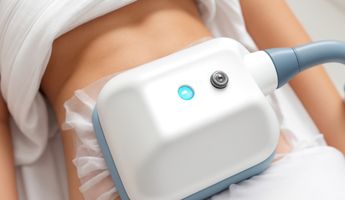
Find the best clinics for CoolSculpting in Bali
No pricing info available
Thailand offers the best prices Worldwide
Price: $ 111
RSU BaliMéd Negara, located in Jembrana, Bali, Indonesia offers patients CoolSculpting procedures among its total of 354 available procedures, across 12 different specialties. Currently, there's no pricing information for CoolSculpting procedures at RSU BaliMéd Negara, as all prices are available on request only. There is currently a lack of information available on the specialists practicing at the Hospital, and they are not accredited by any recognized accreditations institutes
Balimed Denpasar, located in Denpasar, Bali, Indonesia offers patients CoolSculpting procedures among its total of 354 available procedures, across 12 different specialties. Currently, there's no pricing information for CoolSculpting procedures at Balimed Denpasar, as all prices are available on request only. There is currently a lack of information available on the specialists practicing at the Hospital, and they are not accredited by any recognized accreditations institutes
Compare Before & After Photos of _procedure_photos.phpCoolSculpting
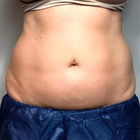
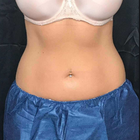
Front view
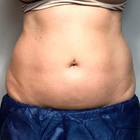
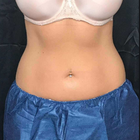
Front view
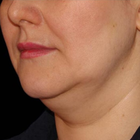
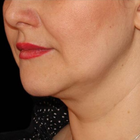
Half-side view
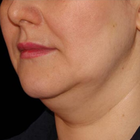
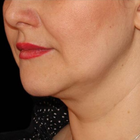
Half-side view
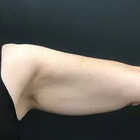
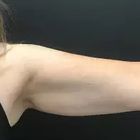
Front view
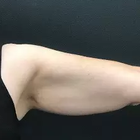
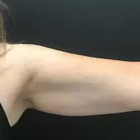
Front view
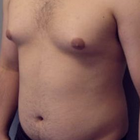
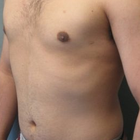
Half-side view
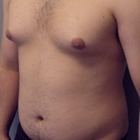
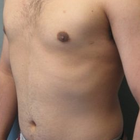
Half-side view
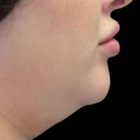
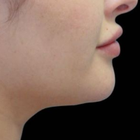
Full-side view

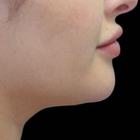
Full-side view
WHY US?
At Medijump, we're making medical easy. You can search, compare, discuss, and book your medical all in one place. We open the door to the best medical providers worldwide, saving you time and energy along the way, and it's all for FREE, no hidden fees, and no price markups guaranteed. So what are you waiting for?

Free

Best Price

Widest Selection

Risk-Free
What you need to know about CoolSculpting in Bali

CoolSculpting, also known as cryolipolysis, is a popular non-surgical fat reduction procedure that uses a form of controlled cooling to remove stubborn fat deposits that have not responded to traditional diet and exercise. It is FDA-cleared for removing fat cells from the abdomen, flanks, and thighs without surgery or downtime. In Bali, many patients opt for CoolSculpting because it allows them to resume their normal activities immediately after the procedure.
The CoolSculpting procedure essentially works by freezing unwanted fat cells, causing them to die and be naturally eliminated by the body over time. One of the notable things about the procedure is that it does not involve any cuts, anaesthesia, or significant downtime. Unlike liposuction, CoolSculpting is not a weight-loss solution, but rather a body contouring procedure, it's ideal for reducing small, localized fat bulges. So despite being a less invasive alternative, the procedure might not offer the extensive fat reduction that surgeries often deliver.
What is the cost of CoolSculpting in Bali?
When calculating the cost for a CoolSculpting procedure in Bali, remember that several aspects factor into the calculation. The final price is governed by specifics like the regions you wish to target, the number of treatment rounds you need, and the particular location. To give a ballpark figure, people often spend from "$500 through $4,000 per each treatment round". Please take note, these values serve as a guide, and the individual's specific goals and the treatment plan can alter the final cost.
Various clinics in Bali do offer provisions for financing to lighten the burden. Periodically, they might also extend promotional campaigns to offer more affordability. Even with cost being a major factor to consider, it's equally important to count in the level of expertise of the practitioner performing the procedure, along with ensuring the safety and efficacy of the treatment.
For a more defined estimate of costs that covers your personal treatment plan, we encourage you to set up a direct consultation with a CoolSculpting professional.
What does a CoolSculpting Procedure Involve?
During a CoolSculpting process, a trained professional starts by marking the specific area on your body for treatment, followed by the application of a gel pad that acts as a protective layer between your skin and the cooling panel of the device. They then use a uniquely designed applicator, functioning much like a vacuum, to gently draw your skin into its cup. This can create a feeling akin to mild pinching, tugging, or pulling. On top of that, CoolSculpting does not involve any incision, stitches, or anaesthesia.
Next, the actual cooling mechanism activates, which can cause a numbing effect on the part of your body being treated. The principle guiding CoolSculpting revolves around the controlled cooling of fat cells beneath the skin, essentially freezing them off. It's significant to highlight that while the fat cells reach the freezing point and get altered, the skin, as well as other adjacent tissues, remain unaffected. This is due to fat cells having a higher freezing temperature.
As the procedure continues, patients can stay relaxed, read, handle emails or even take a brief nap. Typically, each area's session lasts anywhere between 35-60 minutes, and this time frame varies according to the treatment area size.
How Long Should I Stay in Bali for a CoolSculpting Procedure?
Thanks to the non-invasive nature of CoolSculpting in Bali, patients are normally free to resume their usual activities directly after treatment. Every CoolSculpting session generally ranges from 35 to 60 minutes, allowing you to effectively integrate it into your day, perhaps during a lunch break, and return to your routine immediately afterward. Therefore, if you're considering travelling to Bali for the procedure, there's no need for an extended stay.
That said, depending on the number of treatment areas, your healthcare provider may suggest multiple sessions. If this is the case, you may consider a short stay of a few days in Bali for convenience and easy access to your appointments. As with any medical procedure, it's beneficial to discuss these logistics with your chosen clinic or specialist ahead of time.
What's the Recovery Time for CoolSculpting Procedures in Bali?
One of the unique attributes of CoolSculpting is that there's virtually no recovery time necessary. Unlike surgical procedures, CoolSculpting in Bali is completely non-invasive, causing minimal discomfort during and after the treatment. Patients commonly return to work, hit the gym, or carry on with their regular activities right after their appointment.
However, it's normal to experience minor side effects such as redness, swelling, bruising, or sensitivity in the treated area. These symptoms are temporary and typically resolve within a few days or weeks. Always consult with your healthcare provider for a personalized post-treatment plan. Keep in mind that results from CoolSculpting aren't immediately discernible, final results are typically visible after two to three months.
What's the Success Rate of CoolSculpting Procedures in Bali?
With a high satisfaction rate of 82%, CoolSculpting is making a positive impact in the world of non-surgical fat reduction. Isn't it impressive when people have such great experiences that they recommend it to their pals? That's the power of CoolSculpting! Research shows us that just one CoolSculpting session can knock off between 20% to 80% of fat in the treated area. While some individuals hit their body goals at one go, others might need a couple of rounds to knock out that stubborn fat. Keep in mind, however, the fruits of your CoolSculpting session take a bit of time to show - think of it like planting a seed and watching it grow. You'll start noticing changes from the fourth week, and by two months, you'll see the most striking results.
Of course, while CoolSculpting is usually safe, it's only fair to let you know about potential side effects, even though they're pretty rare. We're talking temporary aches, cramps, stinging, bruising, some skin redness, itching, and even a bit of a tingly feeling. In rarer cases, you could see an increase in fat cells, a condition known as paradoxical adipose hyperplasia.
Ultimately, we're all unique, and how our bodies respond to treatments like CoolSculpting can also be different. If you're considering CoolSculpting, having a chat with a certified provider can work wonders. They can give you the lowdown on the process, set your expectations right, and see how the treatment can help you meet your body goals.
Are there Alternatives to CoolSculpting Procedures in Bali?
Indeed, if you're contemplating non-surgical or surgical body contouring methods in Bali, you have options other than CoolSculpting. Bear in mind, that every person is unique, and alternatives should be considered based on your specific concerns, health condition and personal goals.
Among the non-surgical alternatives to CoolSculpting are:
- SculpSure: This treatment uses controlled laser technology to destroy fat cells by heating them.
- UltraShape: This method employs ultrasound technology for body contouring, reducing unwanted fat cells.
As for surgical alternatives, consider:
- Liposuction: A surgical procedure that removes fat deposits directly.
- Abdominoplasty (Tummy Tuck): This process primarily removes excess skin and fat from the abdomen and tightens the abdominal muscles.
Each of these options presents its own set of benefits and potential drawbacks. For instance, while surgical methods like liposuction and abdominoplasty often deliver more substantial results, they are more invasive and come with extended recovery periods and potential risks.
It's advisable to consult with a trusted healthcare professional to discuss these alternatives alongside CoolSculpting. Together, you can decide which option best aligns with your individual expectations and needs.
What Should You Expect Before and After the CoolSculpting Procedure?
Before the CoolSculpting procedure, your healthcare provider in Bali will conduct a thorough consultation during which they'll review your medical history and perform a physical examination. Additionally, they'll use this time to discuss your expectations, explain the process, and create a tailor-made treatment plan. On the day of the procedure, the applicator delivers precisely controlled cooling to the targeted fat cells. Patients may feel an initial sucking sensation followed by cooling, but many people read, work on laptops or even nap during the session. After the applicator is detached, the provider will briefly massage the area to break up the treated fat cells and enhance fat reduction. Post-procedure, the treated area may seem somewhat reddened, tender, swollen, or bruised, but these are temporary and expected. These side effects should subside within a few weeks. You can usually resume regular activities immediately without any recovery period.
What sort of Aftercare is Required for CoolSculpting Procedures in Bali?
Post-treatment care for CoolSculpting procedures in Bali is typically uncomplicated, mirroring a significant perk of the treatment – a zero downtime recovery. This feature allows patients to promptly return to their regular routines. However, like every medical procedure, patients could experience short-lived side effects, such as slight redness, mild swelling, some bruising or increased sensitivity in the treated area. But these are mostly temporary and recede within a few weeks. Keep in mind that individual reactions can vary and everyone's body may respond differently after treatment.
In addition to dealing with any minor side effects, aftercare emphasizes the critical role of a balanced lifestyle. Upholding a healthy diet along with regular exercise is not just vital for enhancing and sustaining the CoolSculpting results, but it also bolsters overall well-being. Remember, although CoolSculpting permanently eradicates certain fat cells, it does not prevent possible weight gain leading to expansion of the existing fat cells. Scheduled follow-up visits with your healthcare provider forms a key part of the journey, aiding in monitoring progress and ensuring proper healing. In essence, a commitment to healthy living is the cornerstone of optimal aftercare following CoolSculpting procedures in Bali.
Is the CoolSculpting procedure safe?
Absolutely, CoolSculpting by and large enjoys a reputation as a safe treatment modality. It has received the thumbs up from the FDA in the United States for its effectiveness in reducing fat in designated areas of the body. Being a non-invasive procedure, it brings down the chances of complications and risks quite significantly when contrasted with other intrusive fat-reduction methods such as liposuction.
Regardless, it's prudent to remember that even the safest of procedures could cause mild side effects. With CoolSculpting, you might experience gentle redness, sensitivity, swelling or even bruises in the area of treatment. Such occurrences are typically short-lived, receding within a few weeks.
Before the initiation of any therapeutic intervention, including CoolSculpting, it's of utmost importance to hold comprehensive discussions with your healthcare provider about any concerns or risks to make a fully informed decision.
CoolSculpting v's Liposuction
Liposuction, although highly effective, is an invasive procedure that requires small incisions for the introduction of a cannula, a thin tube used to dislodge and suction fat. Due to its surgical nature, it unavoidably leaves behind minimal scarring, though the size of these scars is typically tiny and often inconspicuous. Moreover, the procedure necessitates some form of anaesthesia, either local or general. This contributes to an extended recovery period in the subsequent weeks, during which patients may experience discomfort and temporary restrictions in physical activities.
Conversely, CoolSculpting offers a unique advantage as a non-invasive treatment. It does its work quietly in the background, destroying fat cells which are gradually expelled by the body naturally over time, resulting in nearly instantaneous recovery. Patients can return to their routine activities immediately after each treatment. However, pricing for CoolSculpting is typically per site treated, and depending on the amount of fat, an individual may need 1-3 sessions per site, which can add up. Therefore, when there are multiple areas of concern, liposuction could potentially be a more economical choice.
Remember, it's just as essential to consider the safety, effectiveness and long-term benefits of both options as it is to consider cost and recovery time factors. Always consult a healthcare provider to discuss your specific goals and find the most suitable treatment method for you.
Whilst the information presented here has been accurately sourced and verified by a medical professional for its accuracy, it is still advised to consult with your doctor before pursuing a medical treatment at one of the listed medical providers
No Time?
Tell us what you're looking for and we'll reachout to the top clinics all at once
Enquire Now

Popular Procedures in Bali
Prices Start From $120

Prices Start From $931

Prices Start From $76

Prices Start From $236

Recommended Medical Centers in Bali for CoolSculpting

- Interpreter services
- Translation service
- Religious facilities
- Medical records transfer
- Medical travel insurance
- Health insurance coordination
- TV in the room
- Safe in the room
- Phone in the room
- Private rooms for patients available

- Interpreter services
- Translation service
- Religious facilities
- Medical records transfer
- Medical travel insurance
- Health insurance coordination
- TV in the room
- Safe in the room
- Phone in the room
- Private rooms for patients available

- Interpreter services
- Translation service
- Religious facilities
- Medical records transfer
- Medical travel insurance
- Health insurance coordination
- TV in the room
- Safe in the room
- Phone in the room
- Private rooms for patients available

- Interpreter services
- Translation service
- Religious facilities
- Medical records transfer
- Medical travel insurance
- Health insurance coordination
- TV in the room
- Safe in the room
- Phone in the room
- Private rooms for patients available

- Interpreter services
- Translation service
- Religious facilities
- Medical records transfer
- Medical travel insurance
- Health insurance coordination
- TV in the room
- Safe in the room
- Phone in the room
- Private rooms for patients available

- Interpreter services
- Translation service
- Religious facilities
- Medical records transfer
- Medical travel insurance
- Health insurance coordination
- TV in the room
- Safe in the room
- Phone in the room
- Private rooms for patients available

- Interpreter services
- Translation service
- Religious facilities
- Medical records transfer
- Medical travel insurance
- Health insurance coordination
- TV in the room
- Safe in the room
- Phone in the room
- Private rooms for patients available

- Interpreter services
- Translation service
- Religious facilities
- Medical records transfer
- Medical travel insurance
- Health insurance coordination
- TV in the room
- Safe in the room
- Phone in the room
- Private rooms for patients available

- Interpreter services
- Translation service
- Religious facilities
- Medical records transfer
- Medical travel insurance
- Health insurance coordination
- TV in the room
- Safe in the room
- Phone in the room
- Private rooms for patients available

- Interpreter services
- Translation service
- Religious facilities
- Medical records transfer
- Medical travel insurance
- Health insurance coordination
- TV in the room
- Safe in the room
- Phone in the room
- Private rooms for patients available
CoolSculpting in and around Bali
About Bali
Bali is an Indonesian province located on the west side of the Lesser Sunda Islands. It is the country’s main tourist hotspot that attracts millions of tourists each year. The beaches are tranquil and perfect for any sun-seeker, the marine life is one of the most diverse in the world, the culture is beautiful, and the mountains are covered in lush jungles and great for hiking. In addition to the natural and cultural beauty, there are myriad of things that tourists can do here, from yoga, partying, surfing, to horseback riding.
Bali is not only full of fascinating beaches, but this tropical paradise also boasts many high-quality medical facilities offering various types of treatments. The island continues to upgrade its infrastructure and develop its medical centers to compete with neighboring countries, such as Singapore and Thailand. Medical tourists are able to avail of a wide range of treatments including cosmetic surgery and at affordable rates. The medical centers have modern equipment, and there is little to no waiting time for almost every procedure. Additionally, the island is also equipped with exclusive yoga centers, Bali-traditional spas, and Jamu traditional medicinal herbs.
Popular Areas in Bali
- Seminyak is known to be the most luxurious area in Bali. Tourists will find many fashionable boutiques, upscale restaurants, and exclusive clubs. In the afternoon, tourists can soak up the sun while sipping a cocktail in one of its famous beach clubs or take a beginner surfing lesson at one of its beaches. The main beach is Petitenget Beach where tourists can enjoy magical sunsets or swim in its warm waters. The area is also home to Bali’s best cafés, which makes café hopping a must-do event.
- The Nusa Islands is located around 20 kilometers offshore from the main island and can only be accessed by boat. It consists of three islands: Lembongan, Ceningan, and Penida. The most popular and the closest to the main island of Bali is Nusa Lembongan. The biggest is Nusa Penida and the smallest is Nusa Ceningan. The three islands offer tranquil and almost-empty beaches, which is perfect for anyone who wishes to stay away from crowds.
- Ubud is the island’s jungle paradise that still retains numerous aspects of traditional Balinese. It is the place for tourists who wants to immerse in Bali’s culture and nature. There are various beautiful temples, dance shows, and historical sites within the area. The most popular place is Ubud Monkey Forest or the Sacred Monkey Forest Sanctuary, which is a sacred temple, an evocative jungle, and natural habitat of monkeys.
- Sanur is Bali’s earliest beach resort and is located on the eastern side of the island; it contains some of the island’s first hotels. The area is known to be family-friendly as well as one of the best places to enjoy Bali’s magnificent sunrises. Sanur is very quiet which makes it the perfect place for relaxation. Wander around for a day and you will find many major cultural landmarks hidden in plain sight.
- Canggu is famous for its green rice fields, dark sandy beaches, and healthy food. This up-and-coming area is also filled with cool cafes and vegan restaurants. It is also a prime spot for surfing since the beaches have massive shore breaks. One of the most famous places in the area is the Pura Tanah Lot Temple as it is a famous seaside religious site located on top of a rock formation, which offers a picturesque view.
Weather and Climate in Bali
Bali enjoys warm and comfortable weather all year round. The tropical island experiences two seasons: dry and wet. The dry season starts in April and ends in October. The average temperatures during this season are between 23 °C to 31 °C. June to August are the driest months, making them the best months to visit the island. The wet season is from November to March. Expect to find many rainy days during the wet season. The temperatures are generally similar to the dry season, but the humidity will increase significantly.
Getting Around in Bali
I Gusti Ngurah Rai International Airport is the main gateway to Bali and it is located 13 kilometers south of Denpasar and is the second busiest airport in Indonesia. The airport has international connections with major cities around the globe, including Bangkok, Melbourne, Moscow, and Guangzhou. It also serves domestic flights to many regions within Indonesia. The most affordable way to travel to and from Bali is by flying with budget airlines, such as AirAsia, Citilink, and Lion Air.
There are several ways to get around Bali. Most of the transportation options are very affordable. Hiring a motorcycle is the fastest option, but if you do not like the idea of driving by yourself, you can try the motorcycle taxis known as ‘ojek,’ which can be hailed directly from the streets or by using apps such as Grab and Go-Jek (similar to Uber). The apps also provide private cars and food delivery. Taxis are widely available and run on a meter. The most reliable taxi companies are Blue Bird and Express.
Tourist Visas in Bali
Indonesia is known to be a visa-friendly country since most developed countries can enter without a visa. The country allows a citizen of 170 countries to enter and stay for up to 30 days. Citizens of Japan, the United Kingdom, the United States, and 65 other countries can apply for a visa on arrival. It is best to check at the nearest Indonesia Embassy or Consulate to find out if you need a visa or not. All visitors are required to have a visa valid for at least 6 months.
Additional Information
- Local Currency: Indonesian Rupiah (Rp) is the official currency, and $1 converts to Rp14.000.
- Money & Payments: Tourists will find ATMs that accept international cards almost everywhere (mostly Visa and MasterCard). Credit and debit cards are accepted in many shops, restaurants, and hotels. Tipping is not expected but will be greatly appreciated.
- Local Language: The official language is Bahasa Indonesia, and most people will also speak Balinese. English is widely spoken, especially in tourist areas.
- Local Culture and Religion: Most people in Bali follows Hinduism, and almost every aspect on the island is submerged with the Hindu faith. There is also a large group of Muslims as well as small group groups of Christian and Buddhists.
- Public Holidays: Bali celebrates major religious holidays, including Nyepi (Silent Day), Eid Mubarak, Christmas, and Vesak.
Popular Searches
- Plastic Surgery in Thailand
- Dental Implants in Thailand
- Hair Transplant in Thailand
- Breast Augmentation Thailand
- Gastric Sleeve in Thailand
- Gender Reassignment Surgery in Thailand
- Laser Hair Removal in Bangkok
- Botox in Bangkok
- Dermatology in Bangkok
- Breast Augmentation in Bangkok
- Coolsculpting in Bangkok
- Veneers in Turkey
- Hair Transplant in Turkey
- Rhinoplasty in Turkey
- Stem Cell Therapy in Mexico
- Rhinoplasty in Mexico
- Liposuction in Mexico
- Coolsculpting in Tijuana
- Rhinoplasty in Korea
- Scar Removal in Korea
- Gastric Sleeve in Turkey
- Bone Marrow Transplant in India
- Invisalign in Malaysia
- Plastic Surgery in the Dominican Republic
- Tummy Tuck in the Dominican Republic
- Plastic and Cosmetic Surgery in Poland
- Rhinoplasty in Poland
- Hair Implant in Poland
- Dental Implants in Poland
- IVF in Turkey

